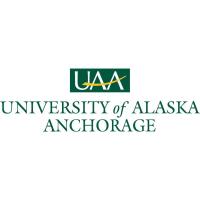UAA announces 2023 ConocoPhillips Arctic Science and Engineering Endowment Award recipients

UAA researchers seek solutions to the Arctic’s most pressing challenges
ANCHORAGE, Alaska — As the nation’s only Arctic state, Alaska faces unique challenges and environmental conditions unlike anywhere else in the United States. Faculty and students at the University of Alaska Anchorage (UAA) continue to drive research that tackles regional challenges in practical ways, such as studying how temperature affects metal corrosion in the Arctic or the effects of tire rubber contamination on salmon mortality.
Through the ConocoPhillips Arctic Science and Engineering Endowment Awards, the university awarded support to five exploratory research projects for 2023 totaling more than $500,000.
“Thanks to generous support from ConocoPhillips, UAA researchers have the opportunity to conduct critical Arctic research,” said UAA Chancellor Sean Parnell. “These projects demonstrate how UAA researchers create real-world opportunities for students to have a positive impact on their communities, the state of Alaska and the Arctic region. Though the projects are faculty-led, many include undergraduate and graduate student participation, providing valuable hands-on experience solving the region’s most pressing problems.”
Selected projects must promote and grow the fields of Arctic science and engineering, demonstrate a likelihood of major scientific or engineering impact and strongly connect to community and industry. Programs, research and activities inclusive of Alaska students, communities, projects and opportunities are given priority.
Created in 2008 as part of a $15 million gift from ConocoPhillips Alaska, the endowment provides annual support to Arctic science and engineering programs and research at UAA and is the largest endowment in the University of Alaska system. Including projects awarded in 2022, there have been 47 projects totaling $3,661,802 funded by the ConocoPhillips Arctic Science and Engineering endowment.
The winning projects for fiscal year 2023 include:
When rubber hits the streams: Tire rubber contamination and Alaska salmon performance
(Jonathan Stecyk, principal investigator; Christine Couturier, co-principal investigator; Patrick Tomco, co-principal investigator; Ben Barst, co-principal investigator) - $125,000 over 24 months
The effects of 6-PPD quinone (6-PPDQ) on Alaskan salmonids remain unexplored. 6- PPDQ is a compound found in tire rubber that is released into the environment as tires wear and has been shown to cause mortality of adult Pacific salmon in the Seattle Pacific Northwest region at very low concentrations. This project examines the effects of 6-PPDQ exposure on the survival and performance of Alaskan salmon species.
Understanding the Effects of Surface Temperatures on the Atmospheric Corrosion of Carbon
Steel Alloy in Cold Arctic/Sub-Arctic Climate. (Raghu Srinivasan, principal investigator; Matthew Cullin, co-principal investigator) -
$125,000 over 24 months
Atmospheric corrosion of metal is a complex process affected by temperature. Typically, only ambient air temperature is reported in atmospheric corrosion studies. This project hypothesizes that the surface temperature of metal alloys affects the corrosion rate. The project will measure the surface temperature of carbon steel alloys and correlate the surface temperature and their atmospheric corrosion rates when exposed to everchanging arctic and sub-arctic climates.
Nutrient Transport in a Changing Climate: Molecular-Level Impacts of High Latitude
Deglaciation in Kachemak Bay, Alaska. (Zachary Redman, principal investigator) - $105,696 over 24 months
Climate induced deglaciation will significantly impact the nutrient availability and productivity of sub-arctic coastal marine environments. Iron is one required nutrient for aquatic ecosystems that is transported by dissolved organic matter from terrestrial watersheds into oceans. This project will characterize the seasonal influence of glacially derived headwaters on the dynamics of terrestrial carbon-iron transport into Kachemak Bay from surface and ground waters. Results will aid prediction of how climate change will impact sub-arctic environments via deglaciation.
Evaluating the capacity of Structural Insulated Panels (SIPs) to meet building codes in high
seismic regions. (Scott Hamel, principal investigator) - $99,100 over 12 months
Buildings constructed with Structural Insulated Panels (SIPs) are well-suited to meet the challenges of cold regions. SIP structures are assembled using prefabricated panels made from foam cores between wood-based sheets. However, SIPs do not currently satisfy standard residential building code requirements in high seismic areas. This project will test plywood polyurethane SIP walls, analyze an archetype building with SIPs as the lateral force-resisting system and assess the seismic performance.
Freshwater ecosystem as sentinels of change: Using stable isotopes and DNA barcoding to
monitor streams and lakes on Alaska’s North Slope. (Erin Larson, principal investigator; Rebecca Shaftel, co-principal investigator)
$84,663 2 years
Stable isotopes and DNA barcoding have emerged as tools for understanding anthropogenic changes to freshwater ecosystems. Benthic macroinvertebrates are commonly used as indicators of environmental pollution in aquatic systems and can be efficiently sampled for stable isotopes. This project will sample rivers and lakes along the Dalton Highway using stable isotopes to infer food web changes due to resource development and leveraging DNA barcoding technology to potentially identify species previously unknown to Western science.
